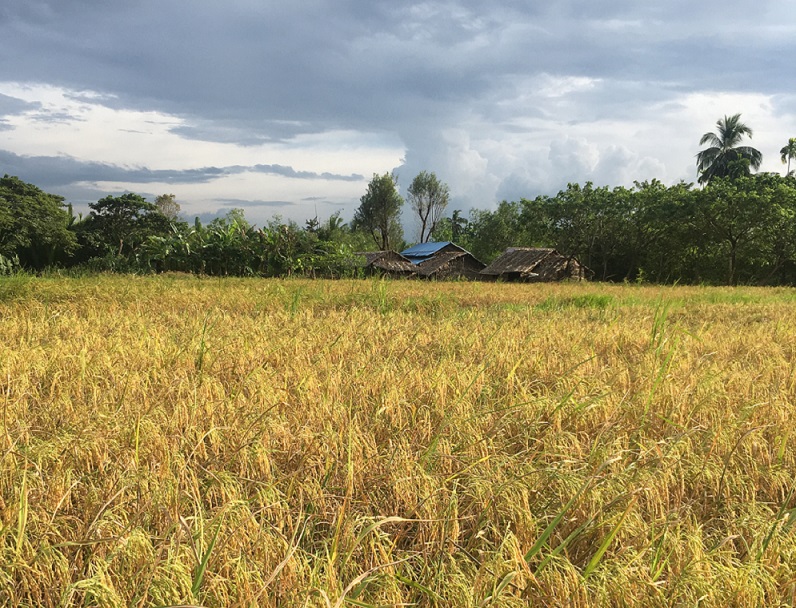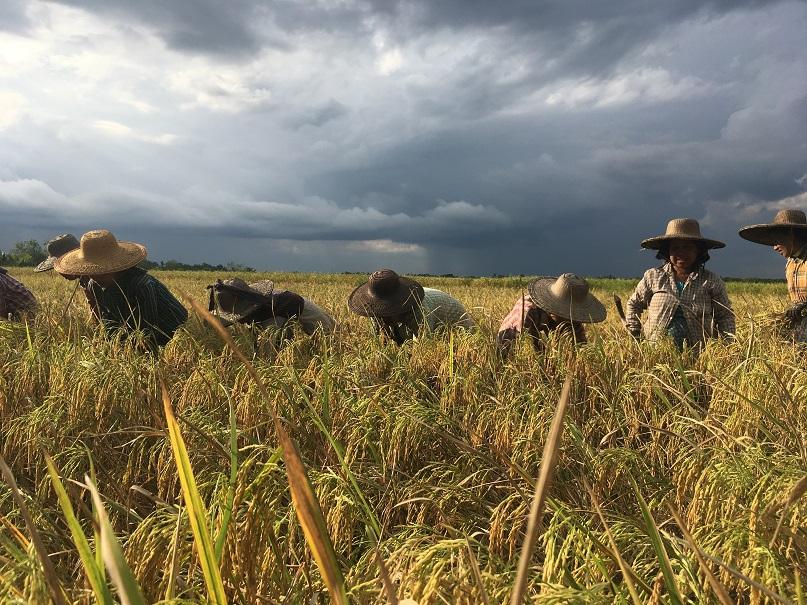Bridging the gap between smallholder farmers and financing to support sustainable agriculture
AgriG8 is an Agri-FinTech company co-created by Trendlines Group and Golden Sunland. It aims to connect smallholder farmers with lenders, opening up the untapped market of millions of borrowers and setting new standards in climate financing.
You recently launched AgriG8 after years of experience with agricultural inclusive business Golden Sunland. Why did you decide to found AgriG8 now, and how does AgriG8 help bridge the gap between financing and smallholder farmers?
Farmers may be well-trained and knowledgeable about good agricultural practices, but a lot of times, innovation requires capital upfront. And most of the smallholder farmers we work with are considered un-bankable. Their only sources of loans are from either microfinance institutions or informal loans where interest rates can be extremely high. In Myanmar, legalized lending rate can be as high as 30% per annum, higher than credit card interest rate. Informal lending is much higher than that.
We are a credit rating and assurance platform, offering lenders a more appropriate approach to access and appraise smallholder farmer borrowers. Leveraging on data and insight we collected with Golden Sunland’s partner-farmers, we can confidently identify farmers with high agricultural potential. AgriG8 helps lenders access good farmers and through financing, empower these good farmers to become better farmers.
The first pilot is happening right now. After pitching to several microfinance lenders, Good Brothers’ Company came onboard with an open mind and reduced the lending rate for farmers who are on AgriG8’s platform. While the reduction is not as significant as we hope, it is already a breakthrough for the industry.
We have made plans to expand to Indonesia, Cambodia and Africa. In Indonesia, we are discussing with potential NGO partners. In Cambodia, we have identified lending partners with the intention to build up their smallholder agriculture portfolio. Initial study into the African market is made possible by our collaboration with Jesuit Refugee Service.

Can you explain more about how the technology also provides incentives for farmers to use more sustainable practices, which in turn makes them more appealing to investors?
Whenever we ask a farmer to move towards sustainable agriculture practises, it is with the mindset of long-term wellbeing of the farmers and also the environment. Often, the farmer is only rewarded (if at all) at the end of the cropping season, after taking on months of production risk. Smallholder farmers have limited mind-space and risk appetite for innovation, which is why to promote sustainable behaviour, we need to address some of smallholder farmers’ challenges upfront, and it can be as simple as offering an upfront reward in the context of lower interest rates for loans.
The lenders should care about this because ESG related investment is gradually becoming the norm. Through our intervention and connecting sustainable farmers with lenders, lenders could say, “We are financing sustainable agriculture and catalysing the transition towards climate smart agriculture.”
We don’t need to look far for technologies. There are available solutions such as remote sensing, IOT devices and sensors. Nothing out of this world and nothing out of reach. The challenge is finding the right business model to aggregate various solutions and amplify the positive effect. It requires a farmer-centric approach and deep understanding of smallholder farmers’ needs and motivation.
You mention that the AgriG8 platform allows financial institutions to validate the ESG performance of the new portfolios. Can you explain how it does this?
The monitoring system is supported by a real-time advisory system to provide active mitigation towards achieving both yield and sustainability objectives. The end result, farmers will produce enough to repay loans and also have a sustainable track record. We promote efficient use of fertiliser rather than blind pursuit of big yield and irresponsible use of agro products that may impact the environment negatively. These fine details are all traceable and made available to the lenders, validating their ESG mandates. Farmers who adhere to sustainable agriculture practises are better farmers who receive a higher score, thus enjoy lower interest rates from lenders.

© GIZ/Susann Tischendorf
Many investors are focused on the green part of ESG. As an inclusive business founder, do you think investors/funders should focus more on the “S” in ESG when evaluating a company?
They are interconnected and it is truly about balance. For example, an overemphasis on the environment may result in a strategy towards organic agriculture without fully understanding the domino effect on the social and governance aspects. This is not saying promoting organic farming is wrong. I believe it has a positive impact on the environment but we also need to mitigate the upfront risk the producers are undertaking. In our work with rice farmers, instead of pushing 100% organic farming from the start, we started off by weaning farmers off harmful chemicals and reducing synthetic product usage. This reduces farmers’ cost of production, increases productivity and allows headspace for deeper thinking about the future. Some may see this approach as compromising, I personally believe that It is important to look at all dimensions of ESG holistically.
You are planning to expand to different countries. Can you tell us more about these next steps? Does the platform need to be tailored to different regions?
The background architecture of the system and algorithm will likely remain the same because most of the smallholder farmers face similar challenges. When looking at different regions, we maintain our farmer-centric approach and would pay special attention to cater to different cultural needs. Different countries also grow different staple crops; our platform would also be refined in catering to specific phenological best practices.
How do you weave in the partnership aspect and collaborate with partners in the different regions?
The smallholder farming sector is well supported by NGOs. When working with a large number of beneficiaries, NGOs need effective client data management systems to quantify impact. Our value proposition to these NGOs is to provide our platform to them and their beneficiaries for free. This includes the farm advisory services that are provided absolutely free to the farmers, with the understanding that data can be harnessed to improve AgriG8’s algorithm and machine learning purposes. Ultimately, when there is a requirement for financing, AgriG8 can step in to bridge the beneficiaries with lenders. This is one of our scaling strategies. The approach focuses on effective use of resources of different parties and moves away from expensive onboarding procedures and data collection. It is really a win-win for everyone.
